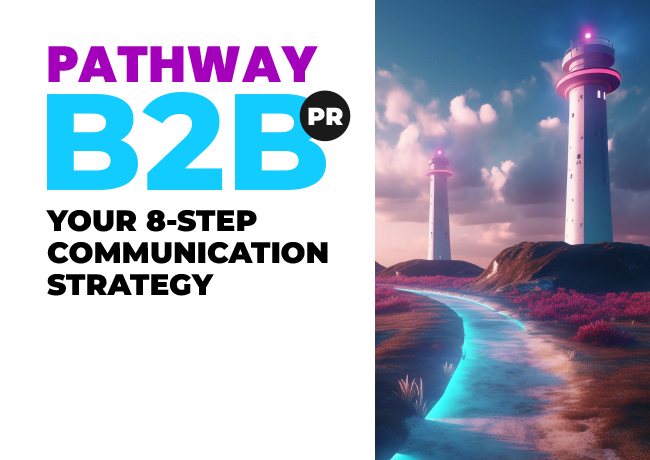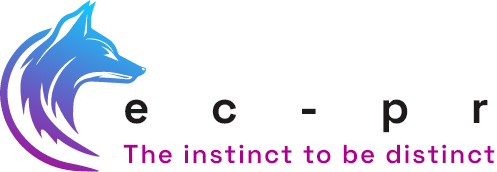
B2B Digital marketing strategy in 2025: lessons from the decline of X
X RIP: A B2B marcomms blueprint for life post-X
In this article we explore lessons learned from the 2023-24 upheaval at X (formerly Twitter) and how it has highlighted the critical need for businesses to reassess their B2B digital marketing strategies.
Learn how B2B companies can future-proof their digital presence by adopting platform-agnostic content strategies, enhancing direct stakeholder engagement, and leveraging data-driven insights while avoiding over-reliance on metrics.
Discover how a focus on resilience, adaptability, and meaningful communication, can help businesses navigate platform volatility and build stronger, long-term stakeholder relationships.
Is it time to reassess where to maintain a strong B2B digital presence in 2025?
The recent upheaval at X (formerly Twitter) has catalysed a significant shift in B2B digital marketing strategy. With major corporations withdrawing from the platform amidst concerns over brand safety and controversial leadership decisions, B2B organisations face unprecedented challenges in maintaining their digital presence. The platform’s struggle with ad manipulation and its owner’s controversial public statements have led to a mere 4% of UK advertisers considering it “brand safe”—a stark decline that exemplifies the broader volatility in today’s digital landscape.
This turbulence, which has seen enterprise stalwarts like Apple, IBM, and Coca-Cola withdraw their presence alongside media organisations like The Guardian and Dagens Nyheter, is a compelling case study for the broader challenges facing B2B digital marketing and communications. The situation highlights a critical need for organisations to reassess their approach to platform dependency and communication strategy diversification.
The shifting landscape of B2B digital marketing strategy
Enterprise communications leaders are witnessing a fundamental shift in how businesses approach their digital presence. Whilst consumer brands can often pivot quickly between platforms, B2B organisations must carefully weigh the implications of platform changes on their long-term stakeholder relationships and industry authority. The exodus from X has prompted many to question the wisdom of relying heavily on any single platform for stakeholder engagement.
This strategic reassessment across the industry has created an opportunity for organisations to demonstrate thought leadership in their approach to platform selection and stakeholder engagement.
The challenge is where to post content and how to build resilient communication frameworks that can withstand future platform instability.
Strategic considerations for B2B digital marketing communications
Risk management and brand protection
Forward-thinking B2B organisations are implementing sophisticated risk assessment frameworks for platform engagement. At the heart of these frameworks lies a continuous evaluation process that ensures alignment between platform presence and corporate values. This approach is complemented by robust escalation protocols for managing platform-related issues as they arise. Progressive organisations are taking this a step further by integrating platform risk considerations into their broader corporate communications strategies, creating a more holistic approach to risk management.
Stakeholder communication continuity
Enterprise leaders are revolutionising their approach to communication continuity through comprehensive multi-channel engagement strategies. These strategies emphasise the strengthening of direct communication channels whilst building a robust owned media presence. Many organisations are finding success by strategically leveraging industry-specific platforms, ensuring their message reaches key stakeholders through trusted, sector-relevant channels
.
Emerging best practices in B2B digital marketing
Platform-agnostic content strategy
Leading organisations are breaking new ground with platform-agnostic content strategies that transcend individual channel limitations. This innovative approach allows content to be deployed across multiple channels without compromising message integrity or brand consistency. By developing channel-neutral content, organisations maintain the flexibility to adapt their distribution strategy as the digital landscape evolves. We have long adhered to this practice via our Pathway comms strategy development process and BIB content activation methodology, enabling clients to be wherever their audience prefers to consume their content.
We also advocate executive engagement on LinkedIn the only social channel committed to business.
Enhanced direct engagement
The transformation of direct digital communication channels has become a priority for forward-thinking companies. This evolution encompasses sophisticated email marketing programmes that deliver personalised, valuable content to stakeholders. Organisations are investing in advanced virtual event platforms and developing custom web portals that facilitate deeper engagement. Integrating industry-specific networks into this mix creates a robust ecosystem for stakeholder communication.
But beware of digital fatigue; remember, at the end of the day, people buy from people! The rush to enhance direct engagement through sophisticated channels brings significant challenges that many organisations overlook. Whilst personalised email programmes, virtual events, and custom portals promise deeper connections, they can create ‘digital fatigue’ among stakeholders already overwhelmed by countless touchpoints demanding their attention. The substantial investment in these platforms often yields diminishing returns as stakeholders become increasingly selective about their digital interactions. Moreover, the push for personalisation can backfire when it feels manufactured or intrusive, particularly in B2B contexts where professional boundaries are valued. Custom platforms and portals, despite their promise, can become expensive digital white elephants that stakeholders resist adopting, preferring instead to engage through established channels. The emphasis on direct engagement can also create unsustainable expectations for constant connectivity and immediate response, potentially straining both organisational resources and stakeholder relationships.
Data-driven decision making
Modern organisations are revolutionising their approach to digital communications through sophisticated analytics frameworks. These systems provide comprehensive insights into platform performance and stakeholder engagement patterns, enabling more informed decision-making. By measuring communication effectiveness across channels, organisations can optimise their resource allocation and enhance their B2B digital marketing strategies with precision.
However, whilst data-driven decision-making offers valuable insights for B2B communications, an over-reliance on metrics can inadvertently undermine brand building by prioritising measurable outcomes over meaningful connections. This approach often overlooks crucial elements that resist quantification: the emotional resonance of brand storytelling, the cumulative impact of consistent presence, and the nuanced dynamics of stakeholder relationships. The pursuit of optimisation can lead to homogenised content that performs well analytically but fails to differentiate the brand or create lasting impression. Moreover, the focus on immediate, measurable results may come at the expense of long-term brand health, potentially stifling the creative, experimental approaches that often lead to breakthrough brand moments and authentic stakeholder connections.
Future-proofing your 2025 B2B digital marketing strategy
As the digital landscape evolves, B2B organisations must construct resilient digital marketing strategies capable of withstanding platform volatility. The X situation has demonstrated that even seemingly stable platforms can undergo rapid changes that impact brand safety and stakeholder engagement. Resilience requires a systematic approach to platform evaluation and selection, coupled with significant investment in owned media channels. Successful organisations maintain flexible resource allocation strategies while focusing on strengthening direct stakeholder relationships through meaningful engagement.
Looking ahead
The current platform dynamics allow B2B organisations to demonstrate leadership in strategic communications. Those who can successfully navigate these changes whilst maintaining strong stakeholder relationships will emerge stronger and better positioned for future success.
Organisations approaching these challenges strategically rather than reactively will be better equipped to maintain effective stakeholder communications regardless of platform dynamics. The key lies in building resilient, adaptable digital marketing strategies prioritising long-term relationship building over short-term platform dependency.
The path forward requires a delicate balance between innovation and stability, adaptability and consistency. As the X situation continues to evolve, organisations that master this balance whilst maintaining a clear sight of their core communications objectives will set the standard for B2B communications in this new era of platform volatility.

Your 8-Step Communication Strategy Guide
A comprehensive guide to delivering your business goals using intelligent and relevant messaging.
Our insights
Subscribe to our updates
Stay up to date with the latest insights, case studies and PR guides.

